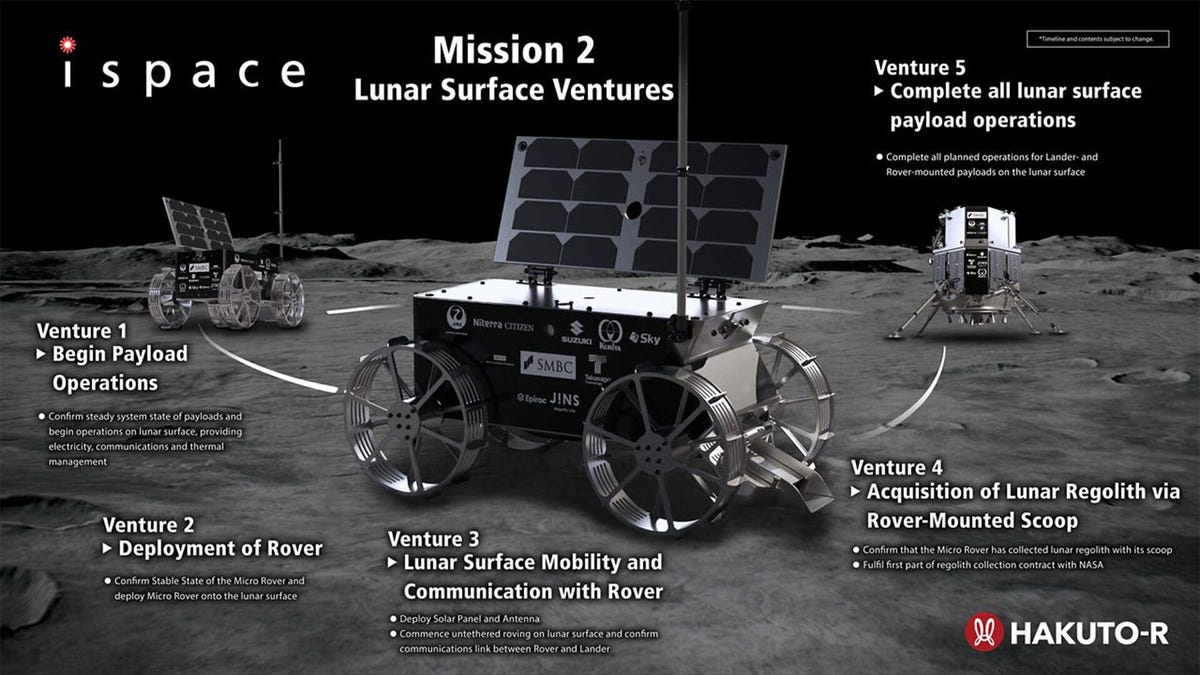Unveiling the Blue Ghost: What to Expect from This Month’s Lunar Expedition
As the lunar lander known as the Blue Ghost gears up for its historic journey to the Moon, anticipation reaches a fever pitch among scientists, space enthusiasts, and the general public alike. This mission promises to push the boundaries of our understanding of the Moon, and its objectives are set to unearth secrets that could reshape our scientific perspective. In this article, we’ll explore what the Blue Ghost expedition entails, its mission objectives, the technology involved, and the potential discoveries awaiting us.
The Significance of the Blue Ghost Lunar Lander
The Blue Ghost mission, developed by a coalition of space agencies and private companies, represents a significant leap in lunar exploration. The name “Blue Ghost” evokes the mysterious and often uncharted territories of our closest celestial neighbor. This mission aims to deploy advanced technologies to study lunar geology, search for water ice, and evaluate the Moon’s potential for future human habitation.
But why is this mission so critical? The Moon serves as an excellent platform for scientific research and technological testing. It’s relatively accessible compared to Mars or other distant celestial bodies. Moreover, findings from the Blue Ghost expedition could inform future missions and establish a sustainable human presence on the Moon.
Mission Objectives: What to Expect
The Blue Ghost lunar lander has a set of ambitious objectives that can be categorized into three main areas:
- Geological Survey: The primary goal is to conduct thorough geological assessments of the landing site. This includes studying the composition of lunar soil and identifying various minerals.
- Water Ice Detection: One of the most exciting aspects of this mission is the search for water ice in the permanently shadowed regions of the Moon. Water is a crucial resource for future lunar missions.
- Technology Demonstration: The mission will also serve as a testbed for new technologies that could be vital for future lunar exploration, including advanced landing systems and autonomous navigation.
Advanced Technologies Driving the Blue Ghost
The Blue Ghost lunar lander is equipped with state-of-the-art technology designed to enhance its scientific capabilities and ensure a successful mission. Key technological features include:
- Autonomous Navigation: The lander utilizes sophisticated algorithms and sensors to navigate the lunar surface autonomously, allowing for precise landing in challenging terrains.
- High-Resolution Cameras: Equipped with high-resolution imaging systems, the Blue Ghost will capture detailed photographs of the lunar landscape, aiding in geological assessments and mapping.
- Sample Collection Tools: The lander is fitted with tools for collecting and analyzing samples directly from the lunar surface, which will provide valuable data for scientific research.
Potential Discoveries: What Lies Beneath?
The excitement surrounding the Blue Ghost mission also stems from the potential discoveries that await us on the lunar surface. Here are some key areas where scientists hope to gain insights:
- Understanding Lunar History: By analyzing the geological features and mineral composition of the Moon, scientists aim to piece together its formation history and geological evolution over the past billions of years.
- Water Ice Deposits: Confirming the presence of water ice would be revolutionary. It could not only support future lunar missions but also serve as a resource for potential fuel production, enabling longer stays on the Moon.
- Impacts on Earth: The Moon acts as a record of Earth’s history. Studying its surface can provide insights into past cosmic events that have impacted our planet.
The Broader Context of Lunar Exploration
As the Blue Ghost prepares for its launch, it’s essential to consider the broader context of lunar exploration. This mission is part of a larger trend toward renewed interest in the Moon, driven by various national and private space initiatives. NASA’s Artemis program, for instance, aims to land the first woman and the next man on the Moon by 2025, emphasizing its role as a stepping stone for future Mars missions.
Moreover, international collaborations are becoming increasingly common. Countries like China, India, and private companies such as SpaceX are also planning lunar missions, fostering a spirit of competition and cooperation in space exploration.
Public Engagement: Inspiring the Next Generation
One of the exciting aspects of the Blue Ghost mission is its potential to engage and inspire the public. Space exploration captivates the imagination, and missions like this provide an opportunity to educate people about science, technology, engineering, and mathematics (STEM).
Through live broadcasts, educational programs, and interactive platforms, the Blue Ghost expedition aims to involve people of all ages in the wonders of space exploration. Schools and universities can utilize the mission’s progress as a case study, fostering interest in scientific inquiry and innovation.
Conclusion: A New Era of Lunar Exploration
As we stand on the brink of the Blue Ghost lunar expedition, the excitement is palpable. This mission not only seeks to uncover the Moon’s secrets but also represents a significant step toward sustainable human presence beyond Earth. The potential discoveries regarding lunar geology, water resources, and technological advancements could reshape our understanding of space exploration.
In summary, the Blue Ghost mission encapsulates the spirit of exploration and innovation that drives humanity forward. With its ambitious objectives and cutting-edge technology, we eagerly await the unveiling of the Blue Ghost and the revelations it will bring from our celestial neighbor. As we look to the Moon, we also look to the future, where new possibilities await us in the vast expanse of space.
See more Future Tech Daily

